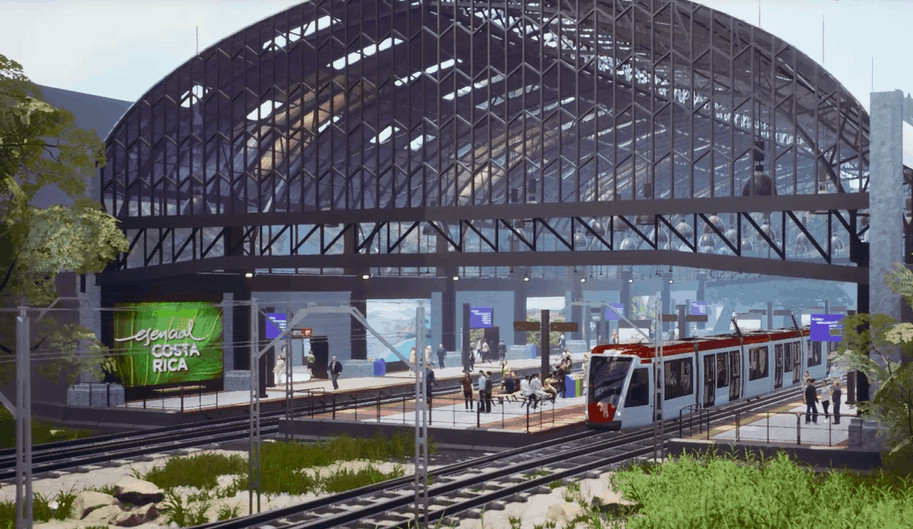The Costa Rican Presidency and the Costa Rican Railroad Institute (INCOFER) on Monday provided further details about an ambitious electric train network meant to revolutionize transport in four of the country’s biggest cities.
The electric passenger train will feature 84 km of railway from Paraíso de Cartago, through San José and to Coyol de Alajuela. Of its 46 stations, 10 will be intermodal — connecting directly with buses, taxis or bike systems.
Once completed, the urban electric train would transport 200,000 people each day throughout the Greater Metropolitan Area (GAM), linking the cities of Cartago, San José, Heredia and Alajuela, according to government models.
A loan from the Central American Bank for Economic Integration, tabbed at $550 million, was introduced before the Legislative Assembly to help fund the $1.55 billion project.
“It will be the largest concession project in the country and will transform our nation in mobility, health and competitiveness,” President Carlos Alvarado said Monday.
The electric train would play a major role in helping Costa Rica decarbonize by 2050. The country’s electrical grid has run on more than 98% renewable energy for the last five years, but the transportation sector remains heavily dependent on fossil fuels.
Per Costa Rica’s National Decarbonization Plan, presented by First Lady Claudia Dobles last February, the train would be the centerpiece in a network of electric buses, walking and biking paths.
It would also provide some structure to a public-transportation system within the GAM that currently relies on a disjointed, antiquated and often inefficient patchwork of private companies.
“This is a project of great importance for the country because it will be a trigger in the modernization of our public transport,” said the Minister of Public Works and Transport, Rodolfo Méndez. “It will allow us to generate more demand, as well as a quality service to users. We will get people back on public transport — and not only on the train but also on buses and taxis, through an intermodal system.”
Costa Rica hopes large infrastructure projects like the electric train will help the country recover from the financial impacts of the coronavirus crisis. The government projects the train’s construction will create 1,200 jobs, and nearly 1,500 people would be employed when it becomes fully operational.
¿Cómo será el nuevo Tren Eléctrico?
Conózcalo en este vídeo junto con los beneficios que este proyecto traerá para el país. pic.twitter.com/MKJ6YOY0kn— INCOFERCR (@INCOFERCR) May 5, 2020
Costa Rica re-focuses on trains
In the late 1800s and early 1900s, railroads served a major role in Costa Rica’s development. Now, the country appears to be going back to those roots as it considers train projects on both the Atlantic and Pacific coasts.
Last year, the government began exploring the feasibility of the Limón Electric Freight Train Project, or TELCA, which would modernize stretches of rail between Limón and Río Frío, and between Limón and Valle de la Estrella, as well as explore the viability of a new stretch between Río Frío and Bajos de Chilamate.
INCOFER is also discussing rebuilding its rail network from the San José area to Puntarenas on the Pacific coast. That infrastructure has been in a state of disrepair after budget cuts and damage caused by the construction of Route 27.
“We are sure that this will contribute to the economic recovery of the area and will generate employment, and that it is also another step to return return to the rail legacy of our grandparents in Costa Rica,” said Elizabeth Briceño Jiménez, executive president of INCOFER.






